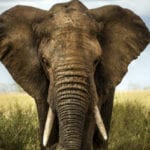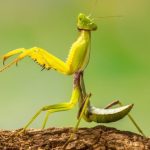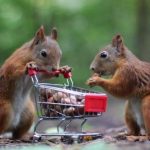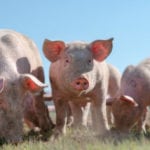 Creepy
Creepy  Creepy
Creepy  Movies and TV
Movies and TV 10 Movies That Get Elite Jobs Right, According to Experts
 Weird Stuff
Weird Stuff 10 Times Real Laws Were Based on Bizarre Hypotheticals
 Animals
Animals 10 Inspiring Tales of Horses Being Human
 Mysteries
Mysteries Top 10 Haunting Facts About the Ghost Ship MV Alta
 History
History 10 Surprising Stories About the Texas Rangers
 Humans
Humans 10 Philosophers Who Were Driven Mad by Their Own Theories
 Miscellaneous
Miscellaneous 10 Video-Game-Worthy Weapons and Armors from History
 Weird Stuff
Weird Stuff 10 Psychics Who Accurately Predicted Wartime Events
 The Arts
The Arts 10 Pieces of Art Inspired by a Broken Heart
 Creepy
Creepy 10 Death Superstitions That Will Give You the Creeps
 Movies and TV
Movies and TV 10 Movies That Get Elite Jobs Right, According to Experts
 Weird Stuff
Weird Stuff 10 Times Real Laws Were Based on Bizarre Hypotheticals
Who's Behind Listverse?

Jamie Frater
Head Editor
Jamie founded Listverse due to an insatiable desire to share fascinating, obscure, and bizarre facts. He has been a guest speaker on numerous national radio and television stations and is a five time published author.
More About Us Animals
Animals 10 Inspiring Tales of Horses Being Human
 Mysteries
Mysteries Top 10 Haunting Facts About the Ghost Ship MV Alta
 History
History 10 Surprising Stories About the Texas Rangers
 Humans
Humans 10 Philosophers Who Were Driven Mad by Their Own Theories
 Miscellaneous
Miscellaneous 10 Video-Game-Worthy Weapons and Armors from History
 Weird Stuff
Weird Stuff 10 Psychics Who Accurately Predicted Wartime Events
 The Arts
The Arts 10 Pieces of Art Inspired by a Broken Heart
10 Unusual Stories Involving Drunk Animals
Humans and animals have a lot more in common than one may assume at first glance. It seems like even the taste for alcohol is not exclusive to mankind. Many animal species, especially fruit-loving birds, have been reported to exhibit drunk behavior after feasting on fermented fruit, grain, and other intoxicating substances.
Some animals are also believed to consume alcohol on purpose since several species have been recorded seeking out intoxicating substances rather than ingesting them by accident. Like people, drunk animals still manage to stir up trouble despite bad coordination and liver problems. Here are some unusual stories about intoxicated animals.
10 Police Lock Up Inebriated Raccoons
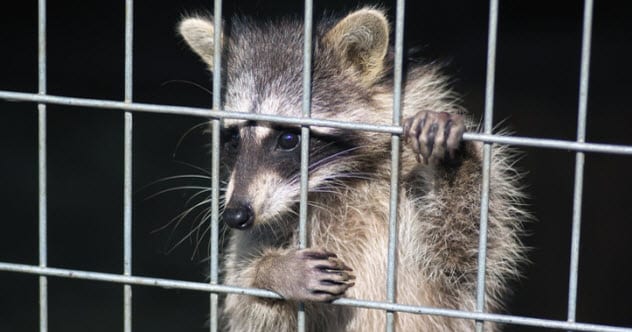
Residents of a West Virginia neighborhood made several calls to the Milton Police Department about disoriented raccoons in November 2018. Locals believed that the raccoons might be sick with rabies. However, the police quickly discovered the real reason behind their strange behavior.
Most fruit can ferment in the presence of yeast or bacteria. In this case, some crab apples had gone bad—or perhaps good from the raccoons’ perspective. The animals were absolutely wasted after eating the fermented crab apples. They caused enough concern in the neighborhood for police to hold two raccoons in custody until they sobered up.
Luckily for the masked bandits, police had looked into the matter instead of making a snap decision and putting them down right away. Both animals were released unharmed near the woods. Sadly, one of the raccoons was euthanized a few days later when it was diagnosed with distemper—a serious viral illness. Police hope the other raccoon continues to thrive in the wild.[1]
9 Drunk Canadian Birds Crash Into Windows And Cars
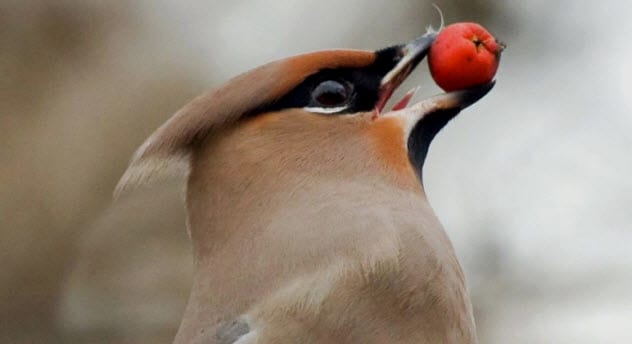
Drastic weather changes, which are fairly common during the autumn months in Canada, can make berries start to ferment. It typically happens when the temperature gradually climbs from a colder period where frost has formed. Then the sugars in the berries ferment and turn into alcohol. This makes birds with an appetite for berries become accidentally intoxicated and behave drunkenly.
Flight coordination can become challenging for drunk birds. They also have trouble with properly using their feet for perching and walking. Some species even show signs of slurred and off-key singing. Many incidents of birds flying into windows, walls, and parked cars have been reported. A few of them even suffer fatal crashes or ruptured livers. In some places, local police had to warn residents to watch out for the inebriated avians.
Over the course of the past few years, drunk birds have become such a common problem that miniature drunk tanks were created in Yukon to help their rehabilitation. Equipped with water and bedding, these small cages are kept dark and quiet to keep the birds safe until they recover. The most common drunk tank resident tends to be the Bohemian waxwing, a Yukon songbird with a diet consisting almost exclusively of fruit.[2]
8 Intoxicated Seagulls Throw Up On English Beaches
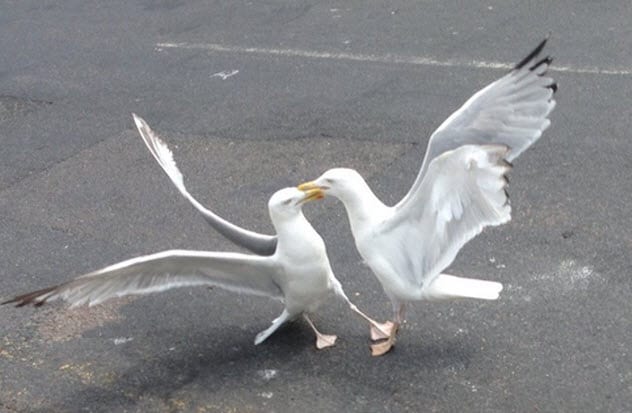
In June 2018, the Royal Society for the Prevention of Cruelty to Animals (RSPCA), the largest animal welfare charity in the UK, received more than a dozen calls about drunken seagulls vomiting on southwest England beaches. The seagulls were described as disoriented, confused, and struggling to stand.
Experts stated that the animals likely found access to waste from a local brewery or alcohol producer. Others theorize that the avians might have gotten into the beer cans left on the nearby beaches.
According to an RSPCA officer, the birds initially looked like they had botulism. However, their recovery after vomiting suggested otherwise. Although most of the birds survived, some of the seagulls were found dead.
A veterinarian who treated several of the drunken birds urged other vets who notice similar symptoms to avoid euthanizing the seagulls as they may be recovering from the effects of alcohol. RSPCA officers also urged local breweries and distilleries to keep their waste secure and away from wildlife.[3]
7 Male Fruit Flies Turn To Alcohol When Sexually Rejected
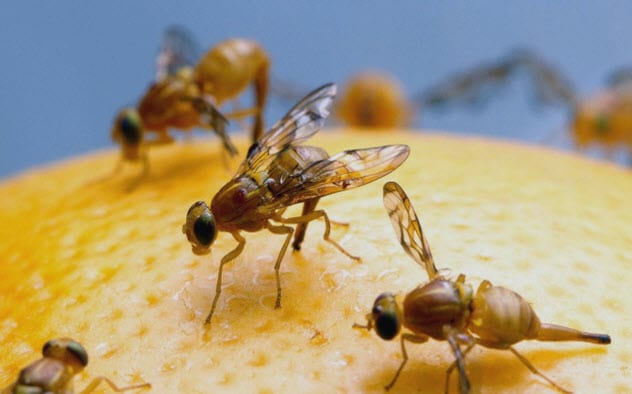
In a 2012 study, researchers discovered that male fruit flies which have not successfully mated prefer food containing alcohol while mated males do not. Mated males also had higher levels of neuropeptide F, a brain chemical which spikes when the flies receive a reward such as sex.
Unmated males with lower levels of the chemical likely turn to alcohol to boost their feelings of satisfaction. Unmated male fruit flies were also documented to avoid alcohol when given artificial neuropeptide F doses.
However, that isn’t the only reason that fruit flies seek out alcohol. Another study revealed that the Drosophila melanogaster species, generally known as the common fruit fly or vinegar fly, uses alcohol to protect its young.
These flies are often targeted by parasitic wasps that lay eggs in their bodies. Typically, around 90 percent of fruit fly larvae make it to adulthood. But with body-snatching wasps nearby, their rate of survival drops to 10 percent.
As a defense mechanism, the larvae have learned to consume toxic levels of alcohol to stop the newly hatched wasps from eating them alive, which raises their survival rate to 50 percent. The alcohol kills most of the wasp grubs and leads to crippling deformities in the rest.
On the other hand, fruit flies are used to living with fermenting fruit and only suffer minor consequences. Even within the mere presence of parasitic wasps, female fruit flies immediately lay their eggs on food soaked with up to 15 percent alcohol concentration—the highest concentration found in nature.[4]
6 New Zealand Votes Drunk Pigeon As The Bird Of The Year
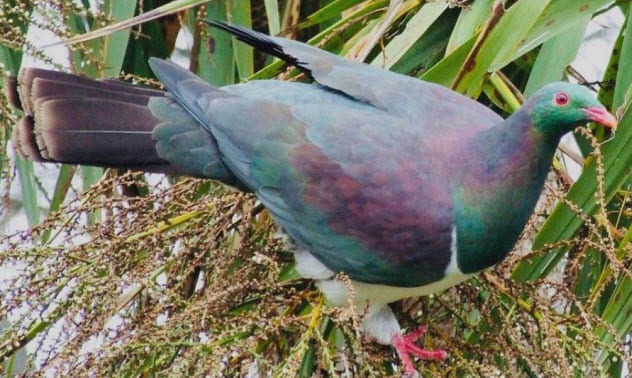
The New Zealand pigeon, commonly called kereru in Maori, is endemic to the country and lives on both of the main islands. This pigeon has an unhealthy habit that has earned it the title “drunkest bird in New Zealand.” When rotten fruit becomes abundant during summers, these birds are known to fall from trees after consuming too much alcohol. Sometimes, the pigeons are taken to wildlife centers to sober up.
Although not endangered, New Zealand pigeons are vulnerable, especially while intoxicated, to predators such as feral cats and stoats. The avians have an important role in dispersing the seeds of native species—such as miro, tawa, taraire, and karaka—as most other birds are not large enough to swallow their fruits whole. The conservation group Forest and Bird describes the bird as clumsy, drunk, gluttonous, and glamorous.[5]
Despite the alcoholism, the New Zealand pigeon was voted the bird of the year in 2018 with 5,833 out of 48,000 total votes. The kakapo earned second place with 3,772 votes, and the black stilt, an extremely rare hand-raised bird, came in third with 2,995 votes. Two thousand fraudulent votes originating from Australia were discarded.
5 Inebriated Squirrel Causes Damage Worth Hundreds Of Dollars
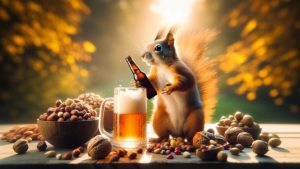
In 2015, the secretary of the Honeybourne Railway Club in Worcestershire, England, thought that somebody had broken in and ransacked the place. That was until the 62-year-old man saw the drunk culprit stagger out from behind a box of crisps. A squirrel had somehow found a way into the private members club and caused an estimated £300 in damages.
The rodent managed to fling itself onto the Caffrey’s Irish ale tap, drink some of the alcohol, and vandalize the club. According to the man, money and bottles were scattered around, several glasses and bottles were smashed, and the floor was covered in beer.
Meanwhile, the slow-moving squirrel tried to stay on its feet. The criminal was eventually caught in a waste paper bin and released through a window.[6]
4 Intoxicated Bats Fly Right
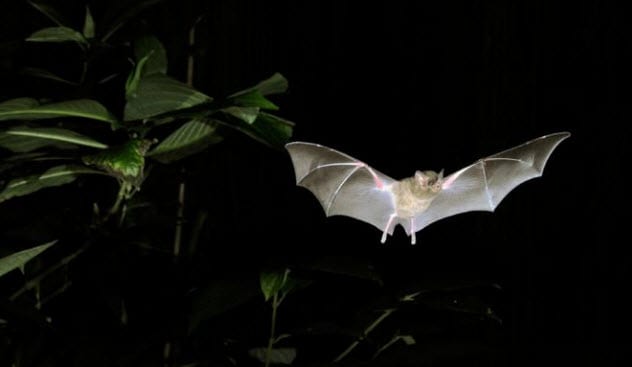
According to a study in 2009, bats can fly just as well under the influence of alcohol as while sober. The research was conducted on 106 bats from six different species caught in northern Belize. They were given sugar water or ethanol—the intoxicating agent in liquors—proportionally to each bat’s body weight.
Next, the bats were placed in an obstacle course on the forest floor with an objective to maneuver around hanging plastic chains. Scientists also recorded their echolocation calls to find out if the flying mammals would “slur their words.”
Despite some of the bats having a blood-alcohol content of more than 0.3 percent, they passed the tests with flying colors. For comparison, in all of the 50 US states, it is illegal to drive with a blood-alcohol content of 0.08 percent. It was also discovered that, like humans, alcohol tolerance in bats may be dictated by how much and how often the animal drinks.[7]
A previous study of drunk Egyptian fruit bats resulted in significantly more crashes than the New World bats. Researchers believe that this is due to the lower availability of fermented foods in Egypt as compared to Central America.
The New World bats’ high tolerance could have given them an evolutionary edge and allowed them to handle fruits that other animals cannot. It might also explain why Central and South American bat species are the most diverse in the world.
3 Some Vervet Monkeys Prefer Alcohol Over Water
Vervet monkeys (aka green monkeys) are native to Africa. Slavers in the 18th and 19th centuries frequently took the monkeys as pets. When their ships ended up on the shores of the Caribbean islands, some of the monkeys escaped or were released intentionally. Today, a handful of isolated vervet monkey groups remain scattered across the islands.
These primates quickly adapted to their new tropical island lifestyle and have lived in an environment dominated by sugarcane plantations for 300 years. Whenever sugarcane was burned or fermented before harvest, it became a delicacy for the vervet monkeys.
They seem to have developed both a taste and a tolerance for alcohol over the years. Locals have plenty of stories about catching the primates by supplying them with a mixture of rum and molasses in coconut shells.
Researchers from the National Autonomous University of Mexico studied the alcohol habits among vervet monkeys and found that teenage primates do most of the drinking. It is believed that adults might drink less due to the stresses of monkey politics. They have to be more alert and perceptive of the group’s social dynamics.
According to one study, when provided with a cocktail of alcohol mixed with sugar water and some sugar water on its own, nearly one in five monkeys preferred the booze.[8]
2 Swedish Drunk Moose Epidemic
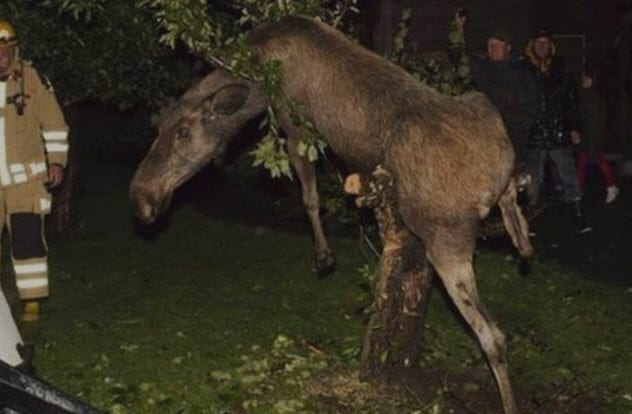
Each autumn, hordes of moose wander into unsuspecting towns, feast on fermented apples, and terrorize the locals. The Swedish press has documented plenty of drunken moose antics over the years. Some of their favorite habits include crashing parties, scaring schoolchildren, and falling into swimming pools.
One inebriated and angry moose fought with a children’s swing set, eventually dragging the playground equipment around 240 meters (800 ft) away. In a different incident, a concerned homeowner had to call the police when a gang of five moose got drunk on the rotting apples in his garden.
Another man witnessed some moose engaging in a threesome after eating a pile of fermented fruit. In Gothenburg, one of the animals got stuck in an apple tree and required assistance from rescue services to break free.
Stories about the intoxicated beasts became so prevalent in Sweden that National Geographic even theorized that one of them might be behind the murder of a woman in 2008. Eventually, police confirmed that the woman had been killed by a moose, although they could not determine whether it was drunk at the time.[9]
Some scientists argue that the animals, which weigh up to 540 kilograms (1,200 lbs), are too big to catch a buzz from eating the fermented fruit and might only appear drunk due to their lack of fear toward humans. However, Swedes are reluctant to accept the theory.
1 Staged Drunk Animal Footage Wins A Golden Globe
Marula trees are widespread across Africa, and their fruit contains eight times more vitamin C than an orange. These trees are incredibly popular among elephants. They eat the tree bark and fruits. Then they spread marula seeds through their feces.
Marula fruit is not only a delicacy for elephants but also for most animal species living in the African savanna. Baboons, warthogs, kudu, impalas, and other creatures also feast on the fruits whenever they fall to the ground or get shaken down by elephants.
Like most fruits, marula can ferment to create alcohol. Tales of drunk elephants go back at least two centuries when a French naturalist named Adulphe Delegorgue described elephants as mysteriously aggressive after feeding on marula fruits. On the topic, Delegorgue wrote, “The elephant has in common with man a predilection for a gentle warming of the brain induced by fruit which has been fermented by the action of the Sun.”
The stories of drunk elephants were believed by many and even inspired the famous “Amarula” cream liqueur, which has an elephant on the front cover. They were just stories until a man named Jamie Uys produced two documentaries in 1974 containing footage of animals getting drunk from eating the fruits.
The footage quickly became famous and even received a Golden Globe for best documentary. Turns out, the directors had given animals alcohol-soaked food to make the intoxication appear more believable.
One of the main arguments against elephants getting drunk from marula fruit is that food is too scarce in the savanna to get a chance to rot before it gets consumed. Also, it is estimated that elephants would need to eat 25 percent of their body weight in fermented marula fruit to become intoxicated, which is highly unlikely. Although the animals in the footage really are drunk, it is not because of marula fruit.[10]
Read more intoxicating stories about animals that got high on 10 Intoxicating Ways Animals Use Drugs and 10 Times Scientists Got Animals High To See What Would Happen.
